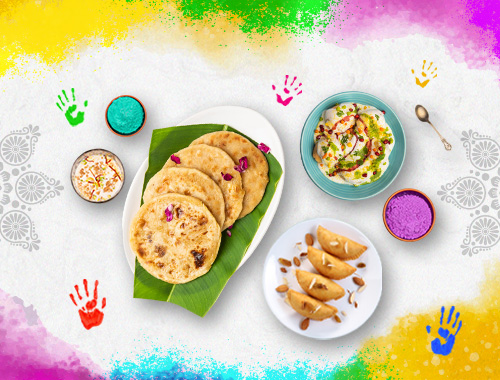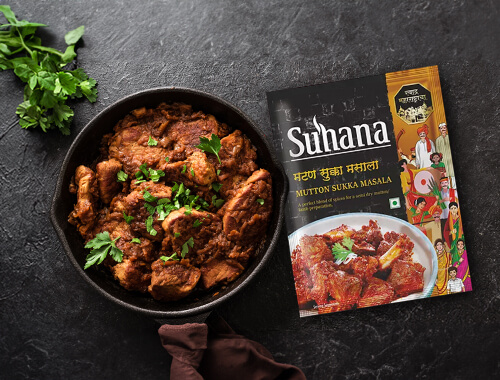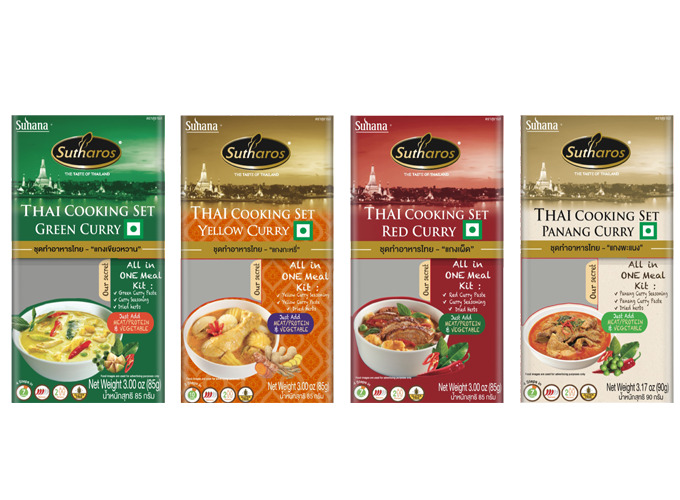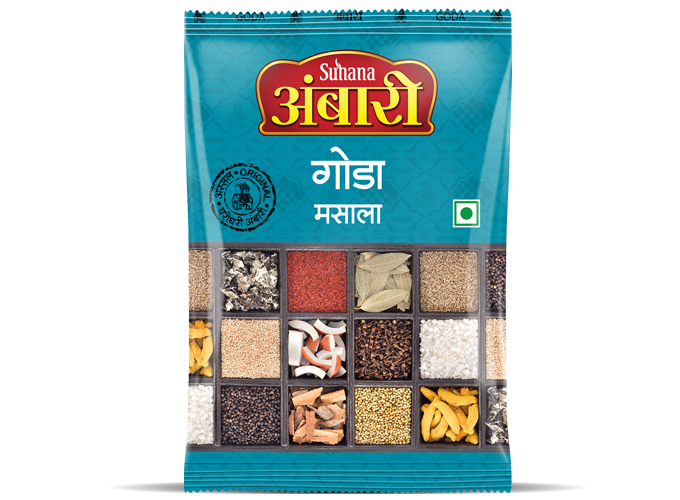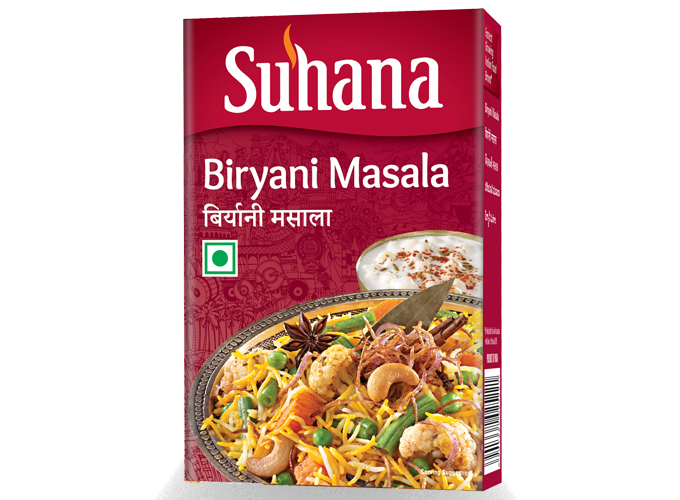What Is Masala Made Of?
Common Types of Masalas
-
Garam masala
Garam masala adds aroma and flavour to your gravies and sabzis, made for rotis and parathas. You can grind garam masala with cumin, coriander, cardamom, black pepper, cinnamon, cloves and nutmeg.
-
Curry masala
Curry masala can be prepared with turmeric, cumin, ginger, and black pepper, which can be added to tawa fried vegetables, paneer, and mushroom, usually spicier than other recipes.
-
Tandoori masala
Tandoori masalas can be added to gravies, kebabs and parathas made of coriander, cumin, garlic powder, ginger, cloves, mace, fenugreek, cinnamon, black pepper, cardamom, and nutmeg.
-
Biriyani masala
Not all biriyanis require biriyani masala. However, you can add it to enhance the flavour, especially for mushrooms, chicken and mutton biriyanis. You can prepare it with fennel seeds, cumin seeds, cloves, cinnamon, black peppers, bay leaves, nutmeg, mace flower, black cardamom, green cardamom, and coriander seeds.
-
Rasam and sambar powder
Rasam and sambar are a staple in Tamil and South Indian cuisine, which use lentils, tomatoes and other vegetables with a tangy taste. Sambar powder uses red chillies, coriander, toor, chana and urad dal with fenugreek and black pepper. While rasam powder is made of coriander seeds, toor dal, cumin seeds, black pepper and red chilli.
-
Chai masala
Chai masala is made with ground cinnamon, ginger, nutmeg, cloves, cardamom, black pepper, and fennel. You can add this masala to the tea powder of your preference and add sugar to taste to make your evenings wonderful.
Regional Variations Of Masalas
-
Kashmiri –
The Kashmiri masala is made of Himalayan rock salt, the Cockscomb flower, saffron, and the common Kashmiri red chillies and cumin. -
Maharashtrian –
Goda masala is the most found in the Maharashtra belt, made of black stone flowers, cumin seeds, pepper, cloves, bay leaf, carrom seeds and asafoetida. -
Tamil powders –
The two famous masala powders from Tamil Nadu are for making sambar and rasam, which commonly have coriander seeds, red chillies, and fenugreek. -
Hyderabadi masalas –
Andhra’s famous black chilli powder, or gun powder, is made of raw garlic, tamarind and coriander seeds, used for dosas and idlis with sesame oil to enhance the taste. -
Bengali –
Bhaja masala with a coarsely-grounded blend of roasted cumin, coriander, fennel, bay leaves and dried red chillies. This is used in mango pickles and traditional Bengali fish curries. -
Konkani –
Cafreal masala’s famous all over Goa and can be used to coat chicken or mutton. It’s made of coriander leaves, spring onions, cinnamon, cloves, pepper, green chillies, cumin, ginger and garlic. They also add red chilli powder, turmeric, jaggery and salt.
How To Use Masalas in Cooking
Spices should be ground and blended with spices, which can be coarse or fine, according to your taste. You can have coarse coriander and pepper powder but ensure other spice powders are finely ground.
-
Marinating with masalas
We are adding endless veg and non-veg options here for tandoori for chicken, mutton, paneer, and cauliflower. Food bloggers and many others are marinating vegetables and meat in chilli, garam, coriander powder, oil, and salt to make the biriyani spicy and bring a tandoori flavour to the vegetables and meat used.
-
Using masalas in curry
Remember when several English shows and movies call our gravies and vegetable palyas curry? They are right since many like their curries to be spicy and tangy. Garam masala, red chilli powder and pepper powder are used in making any curry.
-
Incorporating masalas in rice dishes
Garam masala is widely used in vegetables, mushrooms, chicken and other biriyanis to enhance the flavour. Additionally, Kashmiri red chilli powder or regular chilli powder are added for colour and taste, respectively.
-
Adding masalas to snacks and street food
When you hear Mumbai, Delhi, or any place in India, street food immediately comes to mind. Vada pav, dabeli, pakoras, frankies, or anything, you will get street food garnished with chaat masala, dry mango powder and garam masala. It’s these masalas that make the street food yummy!
Tips For Storing and Preserving Masalas
-
Choose the right containers
The shelf life of different masalas differs, and to extend it, the first step is to choose opaque, airtight jars. Be it glass, metal or mason jars; if there is no air inside the jars, your masalas will be good for months.
-
Avoid using wet spoons
Never use a wet spoon to remove the masalas. Moisture’s the worst enemy of masalas. When wet spoons are kept in the containers, it can smell foul, or you may find tiny lumps in the jars.
-
Store it in the refrigerator
If you have got masalas in large quantities, the refrigerator’s the best place to store these. However, you can always leave these outside before adding them to your dishes to make them taste better.
Health Benefits of Masalas
Indian masalas not only enhance the taste of various dishes, but these ingredients help a little in weight loss, digestion and the rest of the processes that help your body function well.
-
Has anti-inflammatory properties
Our spices, like red pepper, bay leaf, black pepper, and nutmeg, have high anti-inflammatory properties. These reduce inflammation for those who have rheumatoid arthritis, atherosclerosis, and asthma.
-
Rich in antioxidants and essential nutrients
Most of the Indian masalas have cereals and pulses, which are rich in iron, calcium, magnesium, phosphorus, sodium, and potassium, as well as folate and carotene. These help in the proper functioning of your body by maintaining fluid levels and other vital roles in secretion and energy absorption.
-
Boosting metabolism and promoting weight loss
Daily ingredients such as garlic, fenugreek, red pepper, turmeric, and ginger are effective cholesterol-lowering agents. Several other spices have anti-diabetic, anti-obesity, and heart-healthy properties, which can increase the metabolism rate and make people brisker.
Exploring New Flavors: Experimenting with Masalas
-
Creating custom masala blends
Custom masala blends are made by mixing different masalas of various brands. Each masala can have minute differences, but your gravy or parathas can be flavourful like never!
-
Adapting masalas to different cuisines
If you or your family loves a delightful twist for their lunch or dinner, you can always add the Indian masalas to whatever international dish you are trying!
Suhana Masala’s been in the market since 1962 and is found worldwide, serving customers with more than 25 types of masalas. Visit our website to delight your friends and family with wonderful Indian gravies and other recipes.
FAQs
-
What is the difference between garam masala and chaat masala?
The garam masala spice mix uses warm spices like cardamom, cloves, cinnamon, etc.; chaat masala is a mix of different spices and dry mango powder.
Garam masala is used to enhance the aroma and flavour of the dish and is mainly added to curries, while chat masala is added to enhance the dish’s flavour only and make them tangier. You can sprinkle on chaats like Bhel puri, masala puri and fruits. -
Can I substitute one masala for another in a recipe?
You can substitute one masala for another, but there might be differences in taste. You can stock up on Suhana masalas, as you can find one for Shahi paneer, palak paneer, mutton fry and more.
-
Are masalas spicy?
Not all masalas are spicy. However, the spice level depends on your preference. Certain masalas need more spice, especially when you prepare chicken tikka or masala.
-
Can I make my masalas at home?
You can make masalas at home, but the downside of this process is you won’t know when your masalas might become stale. Suhana Masala is a great option to try, and convenient to use. You can store it in a jar or refrigerate it, for a longer shelf life.
-
Where can I buy authentic masalas?
You can buy authentic masalas from Suhana, which has no preservatives. You can find a variety of gravy, tikka and tawa masalas on our website.


